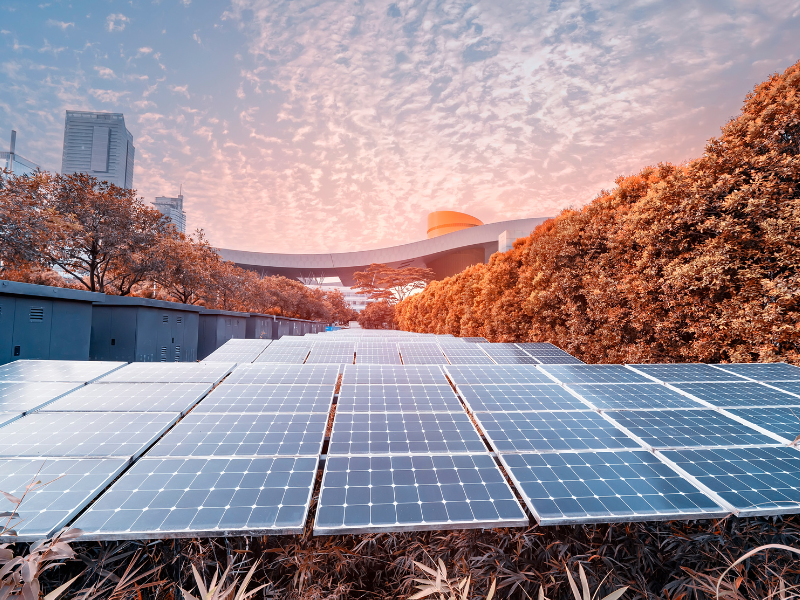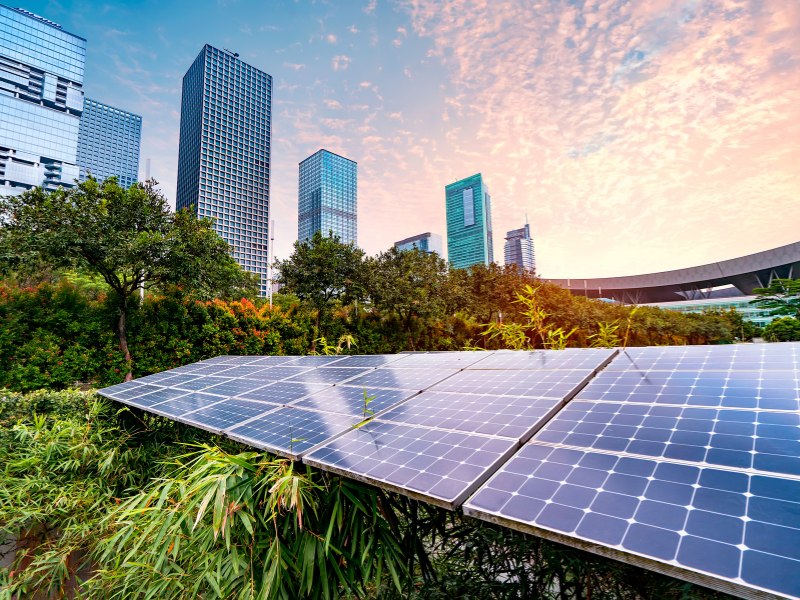As the world collectively recognizes the need to address climate change and reduce emissions, the shift towards sustainable power sources has gained significant momentum. Embracing sustainable power not only helps mitigate environmental damage but also brings numerous benefits to communities worldwide.
In this comprehensive article, we will explore the various community benefits of embracing sustainable power and delve into its transformative potential. From improved public health to economic growth and social empowerment, sustainable power has the power to reshape our communities for the better.
Reducing Environmental Impact

Preserving Natural Resources
The transition to sustainable power sources reduces reliance on finite resources such as coal, oil, and natural gas. By harnessing renewable sources like solar, wind, and hydroelectric power, communities can preserve their natural resources for future generations.
Mitigating Climate Change
Embracing sustainable power is essential for mitigating the impacts of climate change. Burning fossil fuels for energy production is a major contributor to greenhouse gas emissions. Sustainable power sources, on the other hand, have minimal or no greenhouse gas emissions, thereby reducing the carbon footprint of communities.
Protecting Biodiversity
Traditional power generation methods often harm ecosystems and lead to a loss of biodiversity. Sustainable power sources, such as solar and wind, have a minimal impact on wildlife habitats. By embracing sustainable power, communities can protect biodiversity and ensure the preservation of fragile ecosystems.
Enhancing Public Health

Reducing Air Pollution
The combustion of fossil fuels releases harmful pollutants into the air, leading to respiratory ailments, cardiovascular diseases, and other health issues. Embracing sustainable power sources significantly reduces air pollution, improving the overall health and well-being of communities.
Minimizing Water Contamination
Traditional power plants require vast amounts of water for cooling purposes, often leading to water contamination and depletion. Sustainable power sources, such as solar and wind, have a minimal water footprint, minimizing the risk of water pollution and ensuring the availability of clean water for communities.
Combating Noise Pollution
Industrial power generation facilities contribute to noise pollution, negatively affecting the quality of life for nearby residents. Sustainable power sources, such as solar and wind, operate silently, reducing noise pollution and creating a more peaceful and livable community environment.
Empowering Local Economies

Creating Green Jobs
The transition to sustainable power generates new employment opportunities within communities. Renewable energy industries, such as solar panel manufacturing and wind turbine installation, create a wide range of green jobs, boosting local economies and providing stable employment for residents.
Boosting Energy Independence
By embracing sustainable power, communities can reduce their reliance on centralized power grids and imported fossil fuels. This shift towards decentralized energy generation promotes energy independence, ensuring a more reliable and secure energy supply for local businesses, homes, and essential services.
Attracting Sustainable Investments
Communities that prioritize sustainability and embrace renewable energy initiatives often attract sustainable investments. Investors are increasingly interested in supporting communities committed to a cleaner and greener future. These investments, in turn, stimulate local economic growth and contribute to the overall prosperity of the community.
Fostering Social Equity

Bridging the Energy Divide
Embracing sustainable power helps bridge the energy divide that exists between urban and rural communities. Sustainable energy solutions, such as off-grid solar systems and microgrids, provide reliable power to remote and underserved areas, ensuring equal access to electricity and promoting social equity.
Empowering Vulnerable Communities
Vulnerable communities, such as low-income households, often struggle with high energy costs and limited access to clean energy. Through initiatives like community solar projects and energy efficiency programs, sustainable power empowers these communities by lowering their energy bills and improving their quality of life.
Encouraging Community Engagement
Embracing sustainable power encourages community engagement and participation. By involving community members in decision-making processes and promoting awareness of sustainable practices, communities can build a stronger sense of belonging and responsibility towards their collective future.
Promoting Resilience and Disaster Preparedness
Reducing Energy Vulnerability
Reliance on centralized power grids leaves communities vulnerable to disruptions caused by natural disasters or infrastructure failures. Embracing sustainable power, especially through the implementation of microgrids and decentralized energy sources, enhances community resilience by ensuring a continuous and reliable energy supply during emergencies.
Strengthening Infrastructure
The integration of sustainable power infrastructure, such as smart grids and energy storage systems, strengthens community infrastructure. These advancements enable more efficient energy distribution, reduce transmission losses, and improve the overall resilience of communities in the face of climatic challenges.
Facilitating Emergency Response
Sustainable power solutions facilitate efficient emergency response in times of crisis. Access to reliable and sustainable energy sources helps power essential services, such as hospitals, emergency shelters, and communication networks, ensuring the safety and well-being of the community during critical situations.
Educating and Inspiring Future Generations
Instilling Environmental Awareness
Embracing sustainable power provides an opportunity to educate and inspire future generations about the importance of environmental stewardship. By showcasing the benefits and potential of sustainable power, communities can instill a sense of responsibility and environmental consciousness in young minds, fostering a sustainable mindset for the future.
Encouraging Sustainable Practices
By embracing sustainable power, communities lead by example and encourage the adoption of sustainable practices. From energy conservation to recycling and waste reduction, sustainable power initiatives create a ripple effect, inspiring individuals and businesses to embrace eco-friendly behaviors and contribute to a more sustainable future.
Encouraging Innovation and Creativity
The pursuit of sustainable power solutions encourages innovation and creativity within communities. From developing more efficient solar panels to designing innovative energy storage technologies, embracing sustainable power promotes technological advancements and creates new opportunities for research, development, and entrepreneurial ventures.
Collaboration and Partnerships for Sustainable Power
Government Initiatives
Government initiatives play a crucial role in promoting and implementing sustainable power solutions. Through supportive policies, financial incentives, and regulatory frameworks, governments can foster collaboration between communities, industries, and other stakeholders to accelerate the transition to sustainable power.
Private Sector Involvement
The private sector plays a significant role in driving sustainable power initiatives. From investing in renewable energy projects to developing innovative technologies, private companies contribute to the sustainable power transition by bringing financial resources, expertise, and market-driven solutions.
Nonprofit Organizations Driving Change
Nonprofit organizations dedicated to sustainability and renewable energy advocacy play a vital role in promoting community benefits and driving change. These organizations work towards raising awareness, providing resources and support, and fostering partnerships to empower communities in embracing sustainable power.
Overcoming Challenges and Barriers
Financial Constraints
One of the significant challenges in embracing sustainable power is the initial investment cost associated with renewable energy infrastructure. However, innovative financing models, government subsidies, and decreasing technology costs are making sustainable power more economically viable, reducing financial barriers for communities.
Technological Advancements
Advancements in renewable energy technologies continue to address the limitations of sustainable power. Ongoing research and development efforts aim to enhance efficiency, storage capacity, and scalability, making sustainable power solutions more accessible and reliable for communities around the world.
Policy and Regulatory Framework
Sustainable power adoption requires supportive policies and regulatory frameworks. Governments need to streamline administrative processes, provide clear guidelines, and offer incentives to promote the transition to sustainable power. By addressing regulatory challenges, communities can navigate the path towards a sustainable future more effectively.
Case Studies: Successful Implementation of Sustainable Power
Community Solar Gardens in Colorado
The establishment of community solar gardens in Colorado has transformed the state’s energy landscape. These shared solar installations allow residents, especially those who cannot install solar panels on their properties, to benefit from renewable energy. Community solar initiatives have not only reduced electricity bills but also created a sense of collective ownership and environmental stewardship among participating community members.
Wind Farms in Denmark
Denmark’s ambitious wind energy goals and investments in wind farm developments have positioned it as a global leader in sustainable power. Wind farms, such as the offshore wind park at Anholt, have not only helped Denmark achieve energy independence but also generated economic opportunities. The success of wind farms in Denmark serves as an inspiring example for communities worldwide.
Microgrids in Rural India
Rural communities in India face challenges in accessing reliable electricity due to inadequate infrastructure. The implementation of microgrids, powered by sustainable sources such as solar and biomass, has transformed these communities. Microgrids have enabled access to clean and affordable energy, promoted economic development, and improved the overall quality of life for rural residents.
Frequently Asked Questions
- How does embracing sustainable power benefit the environment? Embracing sustainable power reduces greenhouse gas emissions, preserves natural resources, and protects biodiversity, leading to a healthier and more sustainable environment.
- What role does sustainable power play in improving public health? Sustainable power sources minimize air and water pollution, reducing the risk of respiratory diseases, cardiovascular ailments, and other health issues associated with traditional forms of power generation.
- Can sustainable power initiatives help bridge energy inequality? Yes, sustainable power initiatives, such as off-grid solar systems and microgrids, provide equitable access to reliable electricity for underserved and remote communities, bridging the energy divide and promoting social equity.
- How can individuals contribute to embracing sustainable power? Individuals can contribute to embracing sustainable power by adopting energy-efficient practices, supporting renewable energy projects, advocating for policy changes, and raising awareness about the benefits of sustainable power in their communities.
Conclusion
Embracing sustainable power has wide-reaching benefits for communities around the world. From reducing environmental impact and enhancing public health to empowering local economies and fostering social equity, sustainable power holds incredible transformative potential. By harnessing renewable energy sources, communities can pave the way for a greener and more sustainable future, leaving a positive legacy for generations to come. Let us join hands and embrace sustainable power for the betterment of our communities and the planet as a whole.




